4-5. From the first glyph in line Ea3 with Naos
(*121) close to the Full Moon in January 18 (365
+ 18 = 383 = 13 * 29½ - ½) to February 22 (418) at the first
glyph in line Ea4 when the Sun would be rising together with Sadachbia (*338) there were 5
weeks (35
days):
|
Jan 18 |
19 |
20 |
21 |
22 |
23 (388) |
29 |
 |
 |
 |
 |
 |
 |
|
Ea3-1 (66) |
Ea3-2 |
Ea3-3 |
Ea3-4 |
Ea3-5 |
Ea3-6 (71) |
|
E rere te toki - te hau tea - te
vaero |
toki - inoino ma te hatu huri |
te hupee tupu i ruga ia ia |
te toki - te kihikihi |
te toki |
toki hakakaikai |
Vaero. Chicken's long
tail feather; lobster's antenna
(vaero ura). Vanaga. Tail
of a kite, tail of a bird (uero).
T Pau.: tuavaero, rump;
kaero, tail. Mgv.:
vero, tail. Mq.: veó,
id. Ta.: aero, id.
Churchill.
|
Jan 1 (366) |
*20 |
Jan 20 |
|
 |
 |
|
Ea2-17 (49) |
Ea3-3 (68) |
... There
could have been 30 dark
nights from 12 * 29½ = 354
(DECEMBER 20) to
JANUARY 19, on average
the coldest day of the year
north of the equator
...
|
|
VISIBLE
CLOSE TO THE FULL MOON: |
|
8h (121.7)
χ
Gemini (121.0),
NAOS (Ship) =
ζ
Puppis
(121.3) |
ρ
Puppis (122.0),
HEAP OF FUEL =
μ
Cancri
(122.1),
ζ
Monocerotis (122.3), ψ
Cancri (122.6),
REGOR (Roger backwards) =
γ
Velorum
(122.7) |
TEGMINE (The Cover) = ζ Cancri
(123.3) |
AL TARF (The End) =
β
Cancri
(124.3)
RAS ALGETHI (α Herculis) |
χ
Cancri (125.2),
BRIGHT FIRE =
λ
Cancri (125.4)
*84.0 = *125.4 - *41.4 |
AVIOR =
ε
Carinae (126.4),
φ
Cancri (126.8)
*85.0 = *126.4 - *41.4 |
|
July 20 (*121) |
21 |
22-7 → π |
23 |
24 |
25 (206) |
.jpg) |
Here a notable situation needs our attention, because from
February 22 when the Sun rose with the Lucky Star of
Hidden Things ('Felicity of Tents') and the Full Moon
(ideally) would have been at the right ascension line for the
Mane of the Lion (γ
Leonis)

the thought would easily walk on another
half a year ahead to another place where the light from the Sun once again would make
the stars recede from sight. This could have been the origin
of the idea of 'another (period
of) fifty-two years'.
|
Febr 22 |
23 (54) |
24 (420) |
25 (136 - 80) |
26 |
27 |
|
→
INVISIBLY CLOSE TO THE SUN: |
|
Al Sa'ad al Ahbiyah-23
(Lucky Star of Hidden Things)
/
Shatabisha-25
(Comprising a Hundred Physicians)
ε
Oct. (338.1),
ρ
Aquarii
(338.2), 2/365 Lac. (338.5),
SADACHBIA =
γ
Aquarii
(338.6),
π
Gruis (338.9) |
β/172
Lac. (339.2),
4/1100 Lac. (339.4),
π
Aquarii
(339.5)
*298.0 = *339.4 - *41.4
CASTOR (α Gemini) |
δ Tucanae (340.1), ρ Cephei (340.2), ν Gruis
(340.3),
ζ Aquarii, δ Gruis (340.4), 5/1100 Lac. (340.7), σ Aquarii, 6/650 Lac. (340.9)
*299.0 = *340.4 - *41.4
PROCYON (α Canis Minoris) |
υ
Oct. (341.0), α/91 Lac. (341.1),
HOMAN = ζ
Pegasi,
β Piscis Austrini (341.2), ν Tucanae (341.5), υ
Aquarii (341.9) |
η Aquarii (342.1), σ Gruis (342.4),
SITULA (Water-jar) = κ Aquarii
(342.7)
*301.0 = *342.4 - *41.4 |
ε
Piscis Austrini (343.5), ο Pegasi, β Gruis
(343.8) |
|
... γ,
4.1, greenish, on the right arm at the inner
edge of the Urn, and the westernmost star in the
Y, is Sadachbia, from Al Sa'd al
Ahbiyah, which has been interpreted the
Lucky Star of Hidden Things or Hiding-places,
because when it emerged from the sun's rays all
hidden worms and reptiles, buried during the
preceding cold, creep out of their holes! But as
this word Ah Biyah is merely the plural
of Hibā', a Tent, a more reasonable
explanation is that the star was so called from
its rising in the
spring twilight, when, after the winter's want
and suffering, the nomads' tents were raised on
the freshening pastures, and the pleasent
weather set in. This
idea renders Professor Whitney's 'Felicity of
Tents' a happy translation of the original ...
... Zeta
(uppercase Ζ,
lowercase ζ; Greek:
ζήτα
... is the sixth letter of the Greek alphabet.
In the system of Greek numerals, it has a value
of 7. It was derived from the Phoenician letter
Zayin. Letters that arose from zeta
include the Roman Z and Cyrillic З
...Zayin
(also spelled Zain or Zayn or
simply Zay) is the seventh letter of many
Semitic abjads ... It represents the sound
[z]. The Phoenician
letter appears to be named after a sword or
other weapon. (In Biblical Hebrew, 'Zayin'
means sword, and the verb 'Lezayen' means
to arm. In modern Hebrew, 'zayin' means
penis and 'lezayen' is a vulgar term
which generally means to perform sexual
intercourse and is used in a similar fashion to
the English word fuck, although the older
meaning survives in 'maavak mezuyan'
(armed struggle) and 'beton mezuyan'
(armed, i.e., reinforced concrete). The
Proto-Sinaitic glyph according to Brian Colless
may have been called ziqq, based on a
hieroglyph depicting a 'manacle' ...

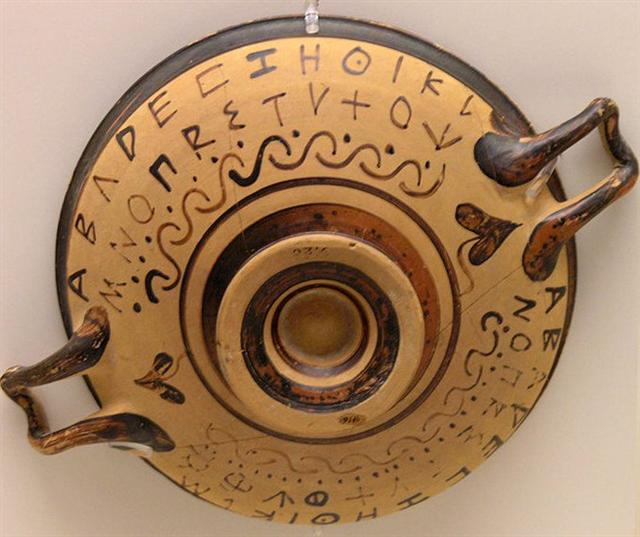
... Kaph is thought to have been derived
from a pictogram of a hand (in both modern
Arabic and modern Hebrew, kaph means
palm/grip) ... The manik,
with the tzab, or serpent's rattles as
prefix, runs across Madrid tz. 22 , the figures
in the pictures all holding the rattle; it runs
across the hunting scenes of Madrid tz. 61, 62,
and finally appears in all four clauses of tz.
175, the so-called 'baptism' tzolkin. It seems
impossible, with all this, to avoid assigning
the value of grasping or receiving. But in the
final confirmation, we have the direct evidence
of the signs for East and West. For the East we
have the glyph Ahau-Kin, the Lord Sun,
the Lord of Day; for the West we have
Manik-Kin, exactly corresponding to the term
Chikin, the biting or eating of the Sun,
seizing it in the mouth.



The pictures (from Gates) show
east, north, west, and south; respectively (the
lower two glyphs) 'Lord' (Ahau) and
'grasp' (Manik). Manik was the 7th
day sign of the 20 and Ahau the last ... |
 |
 |
 |
 |
 |
 |
|
Ea4-1 →
Bharani |
Ea4-2 |
Ea4-3 |
Ea4-4 (104) |
Ea4-5 |
Ea4-6 |
|
Tagata moe |
marama |
tagata moe - marama |
kua
oho - vai taketake |
te
hokohuki - moa ia |
hokohuki |
|
Take. The Marquesans are the only
people who own to a distinctive national name,
and retain a tradition of the road they
travelled from their original habitat, until
they arrived at the Marquesan Islands. They call
themselves te Take, 'the Take
nation'. Fornander. Take, Tuvaluan for
the Black Noddy (Anous Minutes). The
specific epithet taketake is Māori for
long established, ancient, or original. In the
Rapa Nui mythology, the deity
Make-make was the chief god of the birdman
cult, the other three gods associated with it
being Hawa-tuu-take-take (the Chief of
the eggs) his wife Vie Hoa and Vie
Kanatea. Wikipedia.
... When it was evident that
the years lay ready to burst into life, everyone
took hold of them, so that once more would start
forth - once again - another (period of)
fifty-two years. Then
(the two cycles) might proceed to reach one
hundred and four years. It was called 'One Age'
when twice they had made the round, when twice
the times of binding the years had come
together. Behold what was done when the years
were bound - when was reached the time when they
were to draw the new fire, when now its count
was accomplished. First they put out fires
everywhere in the country round. And the
statues, hewn in either wood or stone, kept in
each man's home and regarded as gods, were all
cast into the water.
Also (were) these (cast away) - the pestles and
the (three) hearth stones (upon which the
cooking pots rested); and everywhere there was
much sweeping - there was sweeping very clear.
Rubbish was thrown out; none lay in any of the
houses
...
... In the
present context 'mouth' has an additional
connotation, given that it refers in part to
Heart of Earth, the deity called 'Mundo'
today. This is the great Mesoamerican earth
deity, the ultimate swallower of all living
beings, depicted in Classic Mayan art (in the
Palenque relief panels, for example) as an
enormous pair of jaws upon whose lips even the
feet of great lords must rest in precarious
balance, and into whose throat even great lords
must fall. Turning to the contemporary scene,
daykeepers who visit the main cave beneath the
ruins of Rotten Cane,
the last Quiché capital, speak of the danger of
falling into 'the open mouth of the Mundo'
there, which is said to be more than four yards
wide
...
... A crack
opened up in the ground, and the Rat was put
down into the pit, to rest there - he
hakatopa i te kioe.ki raro ki te rua.he hakarere
... [E:
Tori 4]
...
Interestingly, since another meaning of shi
is 'death', the number 4 is considered unlucky.
For example, the floor numbering in
hotels sometimes jumps
mysteriously from 3 to 5; it's also considered
unlucky to give four of something as a present
...
|
Counting the tresses from
right to left: |
|
1 |
26 |
78 |
1 |
29 |
90 |
|
2 |
26 |
2 |
30 |
|
3 |
26 |
3 |
31 |
|
4 |
25 |
104 |
4 |
34 |
124 |
|
5 |
26 |
5 |
31 |
|
6 |
27 |
6 |
30 |
|
7 |
26 |
7 |
29 |
|
Total = 182 + 214 = 396
|
|
|
VISIBLE
CLOSE TO THE FULL MOON: |
|
ALGIEBA (The Mane) =
γ
Leonis,
q Carinae (155.5) |
TANIA AUSTRALIS (Southern Gazelle) =
μ
Ursae Majoris
(156.0),
GHOST OF JUPITER = NGC3242 Hydrae
(156.8) |
Extended Net-26b (Ox)
μ
Hydrae
(157.1) |
Maru-sha-arkat-Sharru-15 (4th Son behind the
King)
SHIR (Possessing Luminous Rays) =
ρ
Leonis
(158.9) |
p Carinae (159.3) |
φ Hydrae (160.3) |
|
ALCYONE (136) |
*100 |
TANIA AUSTRALIS (236) |
|
May 16 (*56) |
Aug 24 (*156) |
|
σ Virginis (280 = 136 + 64 + 80) |
*100 |
ALTAIR (380 = 136 + 236 + 8) |
|
AUG 4 (*136) |
NOV 12 (*236) |
|
|
Aug 23 (235) |
24 (8 * 29½) |
25 (420 - 183) |
26 |
27 |
28 (240) |
|
→
INVISIBLY CLOSE TO THE SUN: |
|
Febr 22 (53) |
23 (→
Terminalia) |
(365 + 55 =
420) |
25 (136 - 80) |
26 |
27 |
|
ρ Gruis (344.0),
MATAR (Rain) = η Pegasi
(344.2), η Gruis (344.6), β Oct. (344.7) |
λ Pegasi (345.0), ξ Pegasi (345.1), ε Gruis
(345.3), τ Aquarii (345.7), ξ Oct. (345.8), μ
Pegasi (345.9) |
ι Cephei (346.0), λ Aquarii, γ Piscis Austrini,
σ Pegasi (346.5) |
SCHEAT AQUARII = δ
Aquarii
(347.0),
ρ
Pegasi (347.2),
δ
Piscis Austrini (347.4),
FOMALHAUT (Mouth of the Fish) =
α
Piscis Austrini,
τ
Gruis (347.8)
*306.0 = *347.4 - *41.4 |
FUM AL SAMAKAH
(Mouth of the Fish) =
β
Piscium
(348.3),
ζ
Gruis (348.5),
ο
Andromedae (348.9) |
Al Fargh al Mukdim-24
(Fore Spout)
/
Purva Bhādrapadā-26
(First of the Blessed Feet)
/
House-13 (Pig)
SCHEAT PEGASI =
β
Pegasi,
π
Piscis Austrini (349.3),
κ
Gruis (349.4),
MARKAB PEGASI =
α
Pegasi
(349.5)
*308.0 = *349.4 - *41.4 |
The Sun has now - according to my methods - moved ahead with
6 days beyond Sadachbiya (*338) to Matar
(*344), i.e. to the Rain star in Pegasus! Rutua te maeva!
Maeva. T. 1. Move. Rangi-maeva = Moving Sky
(name of a marae). 2. Greet, greeting. Henry.
Rutu. 1. To read,
to recite, to pronounce words solemnly; he-rutu i te
kohau motu, to read the rongorongo tablets; hare rutu
rogorogo mo hakama'a ki te ga poki ite kai, i te rogorogo,
rongorongo school, house in which children were taught
reading and writing the rongorongo signs. 2. To pelt with
stones.
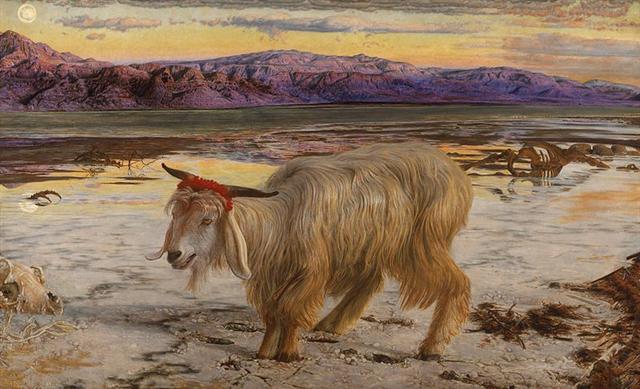
3. To gather in great numbers (of people). Vanaga.
Sound. Rutu-rongorongo = the sound of recitation.
Barthel. T. Beat. Henry. To recite; tae rutu,
irreverence. Churchill. Pau.: rutu, a drum. Mgv.:
rutu, to beat, to cause to resound. Ta.: rutu, a
drum, to drum. Mq.: utu, to drum. Sa.: lutu,
to shake a rattle. Churchill.
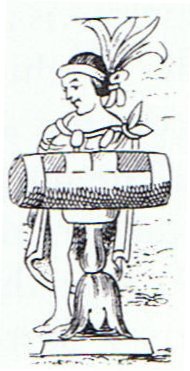
I think this is not evidence of some fault in my methods
but rather the opposite - it confirms we could be on the right
track, because we have seen the
first 6 glyphs on side a of the C tablet and the
first 6 glyphs on its side b were designed
to measure out 6 special days at the beginning:
|
 |
364 + 27
|
 |
|
Ca1-6 |
Cb1-6 (398 =
392 + 6) |
|
March 27 (86) |
Oct 22 (295 =
478 - 183) |
|
β Tucanae
(6.4) |
ARCTURUS
(215.4) |
|
γ Muscae
(189.0) |
MIRA (33.7) |
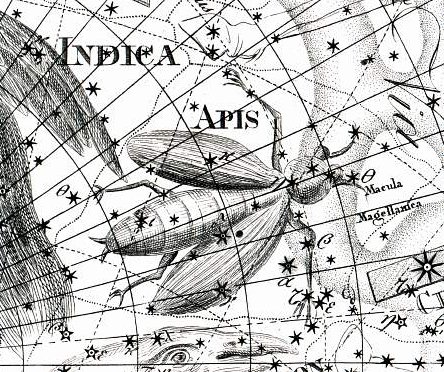
Like Columba, the Dove of Noah, the Toucan
bird
brought a fresh leafy twig in her beak to prove spring
(light, land, ebb)
had returned:
... The earth rises up from the sea
again, and is green and beautiful and things grow
without sowing. Vidar and Vali are alive, for neither
the sea nor the flames of Surt have hurt them and they
dwell on the Eddyfield, where once stood Asgard. There
come also the sons of Thor, Modi and Magni, and bring
along his hammer. There come also Balder and Hoder from
the other world. All sit down and converse together.
They rehearse their runes and talk of events of old
days. Then they find in the grass the golden tablets
that the Aesir once played with. Two
children of men will also be found
safe from the great flames of Surt. Their names, Lif and
Lifthrasir, and they feed on the morning dew and from
this human pair will come a great population which will
fill the earth. And strange to say, the sun, before
being devoured by Fenrir, will have borne a daughter, no
less beautiful and going the same ways as her mother.'
Then, all at once, concludes Snorri's tale wryly, a
thunderous cracking was heard from all sides, and when
the King looked again, he found himself on the open
plain and the great hall had vanished ...
.jpg)
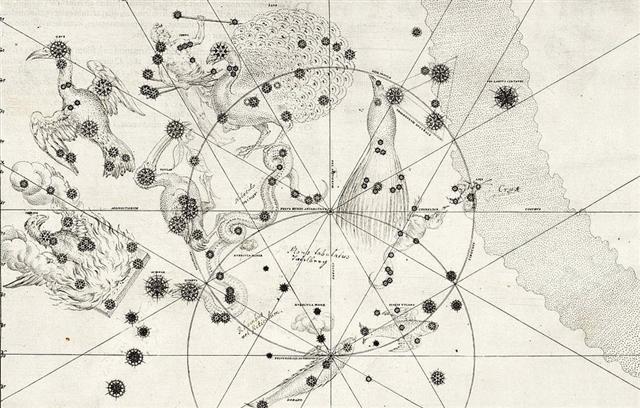
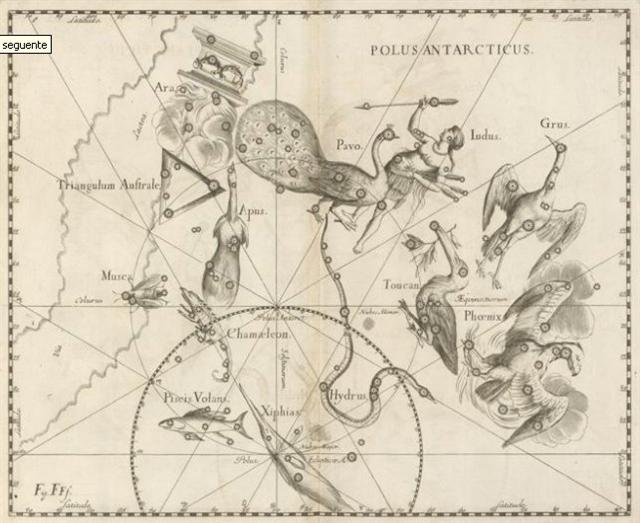
'Another (period of) fifty-two years'
could therefore mean 'another way of measuring', viz.
based on the idea of a congruence between the months February (2)
and that of August (8 = 2 + 6). In other words:
the early spring month named February north of the
equator corresponded to the month of August as regarded
from a viewer south of the equator.
Furthermore, *344 (Matar) +
80 (March 21) = 424 (8 * 53) = 360 (8 * 45) + 64 (8 * 8)
= 366 (2 * 183) + 58 (2 * 29).
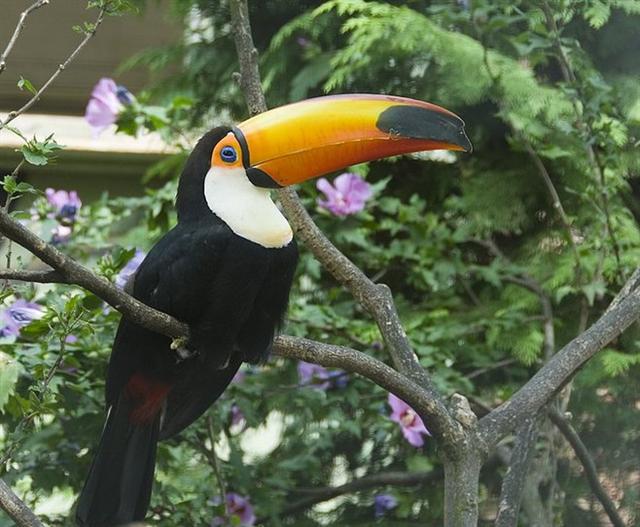
|




.jpg)














.jpg)


